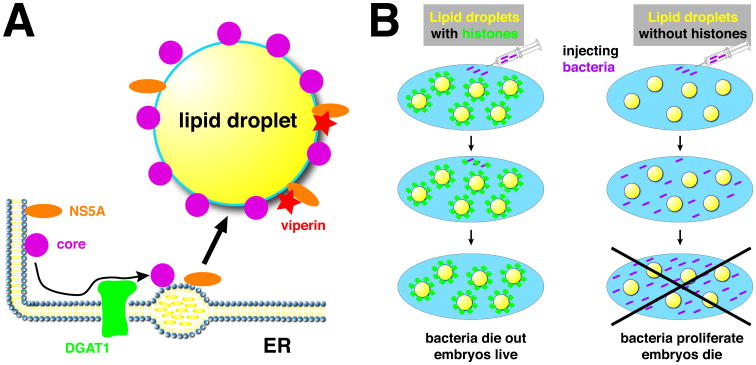Figure 4.
Novel interactions between lipid droplets and pathogens.
A) During Hepatitis C virus replication, newly synthesized core and NS5A proteins are (after processing) attached to the ER. Via physical interactions with DGAT1, they are guided to nascent lipid droplets and thus accumulate on the lipid-droplet surface. This accumulation is a necessary step for later virion assembly. The anti-viral protein viperin also accumulates on lipid droplets, where it physically interacts with NS5A. This interaction suppresses NS5A's function in viral replication. B). When bacteria are injected into the cytoplasm of wild-type Drosophila embryos (left), they are killed via lipid-droplet associated histones, allowing embryo survival. After injection into mutants lacking droplet-bound histones (right), the bacteria proliferate and kill the host.

